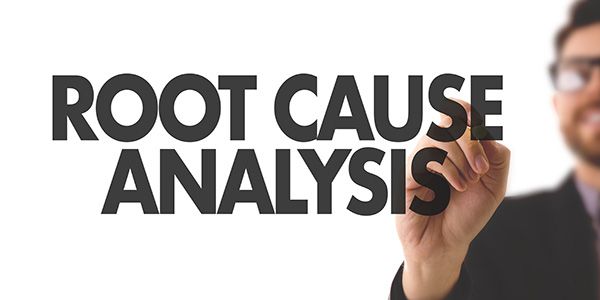Want to Really Understand Business Needs? Sharpen your Root Cause Analysis Skills Part 2
Part 2: Five Root Cause Techniques to help get to Business Needs
Part 1 of this series explored the notion that business needs represent “a problem or opportunity to be addressed” (BABOK Guide v3 definition from IIBA (International Institute of Business Analysis). It stands to reason that root cause techniques are then uniquely suited to understanding those needs since they are designed to get to the bottom of a problem or opportunity.
In this part I review five of my favorite root cause techniques and suggest the kinds of situations for which they are most appropriate.
Five Techniques
These five techniques are not an exhaustive list, but they are some of my favorite tools I have found helpful over my career to understand and ultimately solve business problems. They all have their purpose and are in the BABOK or PMI BA Standard or both:
- Consultative interviewing – essential when using the other techniques, including…
- Five-whys – more of a mindset, but often overlooked when we are busy – which is usual!
- Fishbone/Mind Map – great brainstorming tools to help structure your root cause analysis.
- Pareto diagram – A technique that uses data to help find the primary causes of a problem.
- Interrelationship Diagram – excellent tool when there are compounding, interactive, (and possibly even competing) root causes.
1. Consultative Interviewing
As we saw in the first part of this series, it is easy to jump to solutions. I believe we need to understand the problem first and use consultative interviewing to do that and to start uncovering business needs.
Consultative interviewing is a special kind of elicitation that is professional and focused on goals and is respectful and collaborative. When done right, it builds credibility, trust, and ultimately buy-in. The latter point is important if the root cause suggests a different solution than one favored by our sponsors.

Many of us already use this form of questioning or interviewing automatically. We know that it requires good listening skills and genuine curiosity and interest to determine both needs and expectations. Consultative interviewing leads to positives such as informed advice, confident recommendations, and viable alternatives. (Confidence is important if, again, we end up recommending a different solution than the assumed one.)
The Right Questions the Right Way
Increase Buy-In. Consultative Interviewing helps discover together what the client’s needs and wants are, and how our solutions can meet them. Eliciting needs, whether in sales or business analysis, is best done as a collaborative discovery process, and not as an “extraction.”
Avoid leading questions. Consultative questions are designed to broaden the conversation and encourage clients to open up and share their needs and concerns. Otherwise, “leading” questions give the impression the questioner has a hidden agenda and is pushing a certain solution. This also helps build trust.
Examples of leading questions to avoid as you interview consultatively include:
- “Don’t you think that ________?”
- “Isn’t it better to _________?”
- “Have you ever thought about a _________?”
Instead work to use consultative phrases that promote open, thoughtful dialogs such as:
- Tell me more about…
- Let me see if I understand…
- Could you elaborate on…
2. Five WHYs
Remember the Jefferson Memorial story form part 1 of this series? It was an example of 5 whys in action. This is not a technique as much as a mindset. It has been part of business since the 1930’s because it is effective and reminds us we need to go deep enough to get to the real needs.
It is simple and easy to use and can be employed often with little preparation. On its own it can lead us to the root cause of a problem, but we can be led down the wrong path if we ask the wring people or those with hidden agendas. Five “whys” is part of other analysis tools as we will see and works best with a consultative interviewing style to ask “why.”
Five WHYs Example
Here is a favorite (and simple) example of mine to illustrate Five whys. Suppose you faced a problem like this:
We need to fix the potholes on Main Street again. How can we patch the potholes the fastest and cheapest way?
1. Why do they develop again so soon? A: The holes develop every year and they do not go away.
2. Help me understand that. A: Over time the asphalt deteriorates and develops holes.
3. Why does that happen? A: The freezing and thawing of the asphalt wears it out.
4. I thought asphalt lasted forever? A: Asphalt is durable for 10-15 years, then the coating begins to wear out, and it cracks easier.
5. Tell me more…A: The City has not resurfaced Main Street for over 20 years – the cost of repairing potholes in any year is less than resurfacing it.
So, the root cause of this example is a funding or budgetary problem, not deteriorating asphalt.
[widget id=”custom_html-68″]
3. Fishbone Diagram/Mind Map
Once we use consultative interviewing or other tools to understand the problem or situation, we can use other more elaborate techniques that incorporate Five Whys to get to the root cause. These two root cause techniques do just that.
Fishbone diagrams and mind maps are snapshots of what is going on today. Assembling them makes use of Five Whys to help get to the root cause. The resulting diagram often exposes areas where we lack knowledge and/or data. See Figure 1 for the structure and Figure 2 for an example.
The Diagram

Figure 1: Fishbone Diagram Structure
Fishbones start with the “Effect” as many fishbones call the problem. Because of that, it is also commonly called a cause-end-effect diagram or Ishikawa Diagram after the inventor. It usually has 4-8 major sub-causes, which can be “5 why-ed” down into sub and sub-sub-causes.
The major causes on the tips of the “bones” can be any relevant categories, but in practice usually come from a standard group such as People, Policy, Process, Place, Machines, Measurements, and Systems.
For example, say you have a problem of transferring medical records too slowly. Here is how to complete the fishbone:
- Start by asking why verifications are so slow (consultatively of course).
- Maybe you determine there are 4 main categories – People, Process, Measurements, and Systems. Note them on the diagram as shown on Figure 2.
- For each of the main categories, ask how the category, like Process, slows down the transfer of records.
- Maybe you get the reason of “inefficient transfer process.” From there ask how does an inefficient transfer process slow down transfers. You might hear “too many manual processes” and “serial, one-at-a-time processes.” Note these too on the diagram in a hierarchical structure like Figure 2 below.
- Continue adding additional sub-causes as appropriate.
- Move on to each of the major categories you identified and drill down each of them. Tip: For both the mind-map and fishbone, I recommend only going about 3 levels deep, otherwise your diagrams are too detailed and “bony.”

Figure 2: Example Fishbone Diagram
Mind Maps
A mind-map is basically the same as a fishbone, but with a format more like an octopus (bad joke). Start with the problem in the middle, like the head of the octopus. Instead of fishbone ribs, the tentacles are the causes, and they in turn can have sub-causes.
Figure 3 shows the same medical records example done as a mind map.

Figure 3: Example Mind Map
Tip: There is no need to do both a fishbone and a mind map since they both diagrams accomplish the same thing. Use whichever one is more appealing or is a standard at your organization.
4. Pareto Diagram
Pareto diagrams are graphical tools applying the Pareto Principle, which is based on the 80/20 rule. They use data to focus efforts on the factors and causes that offer the greatest potential for improvement.
They display the relative importance of problems in a simple, quickly interpreted, and user-friendly format. They are best used when you face problems that have many symptoms that can be measured.
How to Create a Pareto Diagram
- Decide on the problem, such as customer complaints.
- Choose the issues or causes. (Five whys can help).
- Collect data for the potential causes.
- Order data from largest to smallest and draw the bar graphs. See Figure 4 for an example.
- Calculate the percentage of the total that each category represents and the cumulative percentage starting with the largest category. Excel makes this fairly easy.
- Graph the cumulative percentage line.
- Analyze the “vital few” breakpoint when the curve hits 80%. These are the most significant causes – the 20% that cause 80% of the problem.

Figure 4: Example Pareto Diagram
5. Interrelationship Diagram
Fishbones and Mind maps have their limitations, with one big one being they are hierarchical. What if your problem is more complex with some causes also being the symptom of other causes and so on like a chain reaction?
The Interrelationship Diagram helps with that situation. It is an excellent tool that helps when there are compounding (and possibly competing) root causes.
- Starts with a situation / problem like “Customer reports are not getting out on time.” See Figure 5.
- Add in the potential causes as bubbles, using the most likely ones you found, such as from a Fishbone Diagram or Five Whys. Tip: try to limit the causes to no more than 7 plus or minus 2 to keep the diagram at a high level.
- Add “cause lines” by drawing arrows from one bubble to the next according to whether a factor is a cause of another or an effect. (For example, Low Wages cause staff shortages and Scheduling problems. Staff Shortages in turn cause paper to run out, database extract delays, and scheduling issues.)
- When done with all causes, add numbers to indicate how many times a factor is being caused by another (“Incoming Causes”) or is the cause of another (“Outgoing Effects”). For example, 3,1 for “Not Enough Paper” means it is a symptom 3 times from other factors and is itself the cause of 1 other factor.
- Make determinations of which are the most significant (or “big”) causes. These are the important factors to correct such as “Shortage of Staff.” Working on symptoms like “DB extract delays” will not be as fruitful to solving the problem.

Figure 5: Example Interrelationship Diagram
Summary
Understanding and addressing business needs are arguably the most important factors for any successful project, program, or product. This series covered the importance of needs and five techniques that will help discover the root cause of business problems, which equate to the important factors for learning business needs.









